“Turn it, and turn it, and turn it, and turn it, and turn it, and turn it, Compost Cake!”
“Pile it high, pile it high, pile it high, Compost Cake!”
If you’ve heard this song about compost all around campus this fall and winter, it’s because we got new compost bins in the Primary and Lower Elementary gardens! Why did we get new bins, you might ask? Two reasons:
- We needed more space for the volume of organic waste we produce (a combination of garden waste and food scraps from the students' lunches and snack preparation)
- We wanted to try a more interactive, faster, and developmentally appropriate compost model for our younger students.
So what did we get? If you visit the Primary and Lower Elementary gardens, you’ll see some giant green cylinders sitting on a rotating axis. These compost bins are called tumblers. Tumbler compost models allow students of all ages to spin the compost (working those gross motor skills), in addition to speeding up the composting process. In our old bins, it took at least a year for our food waste and garden scraps to decompose fully, we'll make finished compost in as little as two weeks. Cheers to that!
What is Compost?
Compost is the product that’s left after organic matter has fully decomposed. It’s also called humus. Human-made compost comes from carefully mixing food and garden waste materials — ingredients high in either nitrogen or carbon — and placing them in an environment where they can decay. When the decaying process has gone well, we put the finished compost, or humus, back into the garden soil and grow healthier plants by improving soil fertility.
Why do we compost at Greensboro Montessori School?
For starters, compost has a longer ground-life than other fertilizers. It lasts longer in soil than crop residues or animal manures that degrade rapidly here in the humid Southeast. This longevity makes for healthier plants and food crops. Composting also reduces our waste throughout campus. By diverting organic matter from the landfill and into a closed-loop cycle, we transform our “waste” into a fertilizer for our gardens and food for the microorganisms that live in the soil beneath us. We also save money by eliminating the need and associated cost of additional soil fertility inputs. And let's not forget, composting is just plain fun!
Can you think of any other reasons to compost? Maybe, that by doing it, we are feeding the worms our Toddlers so adore? That it’s a responsible use of resources? That it's a project-based way to teach science? Share your thoughts with us! And, if you want to learn more, please join us at our next Community Garden Workday for more composting tips and tricks with our environmental education faculty. We’d love to have you.
If you're interested in learning more about the science of composting, read this article from Live Science.
 About the Author
About the Author
Eliza Hudson is Greensboro Montessori School's lead environmental educator. Eliza holds her bachelor's degree in biology from Earlham College in Richmond, Ind. She has built and tended school gardens, taught hands-on cooking lessons and connected local farms to school programs working for FoodCorps. Prior to joining Greensboro Montessori School in 2014, Eliza was a classroom and after-school assistant at the Richmond Friends School, a farm intern at a family-owned farm in Ohio, and served as assistant director at a summer day camp in an urban community garden in Durham.
Greensboro Montessori School has taught environmental education since 1995 and has been permaculture gardening on its campus since 1997.
Within the three-year cycle of Lower Elementary (first through third grades), students and teachers spend one year studying the fundamental needs of humans. This theme is woven throughout their curriculum and students embark on relevant research projects providing purpose and context for their learning. Over the year, the students learn why food, water, shelter, clothing, art, and community are necessary for humanity and how these needs have remained consistent throughout our time on Earth.
One of the ways our students share their growing knowledge of human civilization, and our most basic needs, is through their Festival of Light presentation. Students read the book “Celebrations Of Light : A Year of Holidays Around the World” by Nancy Luenn. The book is a springboard to research projects centered on 12 countries and the light-themed cultural celebrations that both define and unite them. It provides exposure to the diversity of our world while simultaneously highlighting how light brings people together.
Students form teams, each taking one of the 12 countries and its respective celebration. From there, they delve into the history of the country, its culture, and the celebration. They study some of their nation’s accomplishments, art, food, geography, religion, storytelling, traditions, and writings. All of this research prepares them to participate in Greensboro Montessori School’s triennial Festival of Light.
The Festival of Light features all of our Lower Elementary students in an evening presentation for their families, faculty, and members of the greater school community. Each of the 12 teams prepares a narrative on their country’s celebration of light. The celebrations include:
- New Year's Eve in Brazil
- The Chinese New Year
- The Lantern Parade (Eid al-Fitr) in Sierra Leone
- Lichtmesdag in Luxembourg
- Buddha's birthday in Korea
- Bon Matsuri in Japan
- Diwali in India
- Loy Krathong in Thailand
- Hanukkah in Israel
- Luciadagen in Sweden
- Christmas in the United States
- Las Posadas in Mexico
- Kwanzaa in the United States
The presentation itself anchors our students’ research in purpose and provides these first, second, and third graders with a nurturing and challenging academic experience. Surrounded by their families, friends, and teachers, students share their knowledge in a safe space where they will be celebrated for their work. The Festival of Light also challenges our students by pushing them to develop and expand their public speaking and presentation skills in new ways.
When the last celebration has been presented, the audience chairs have been put away, and the families have left for home, there’s no doubt our students have been part of an educational experience. One that has taught them about the fundamental needs of humans, community, teamwork, and so much more.
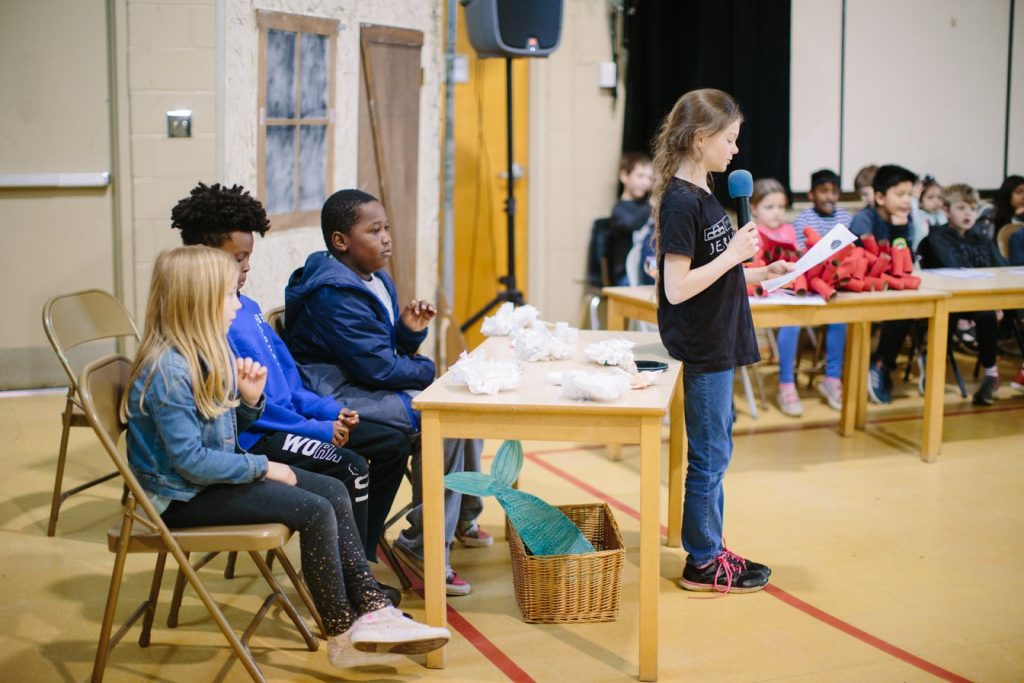
Lower Elementary students rehearse for Greensboro Montessori School's triennial Festival of Light.
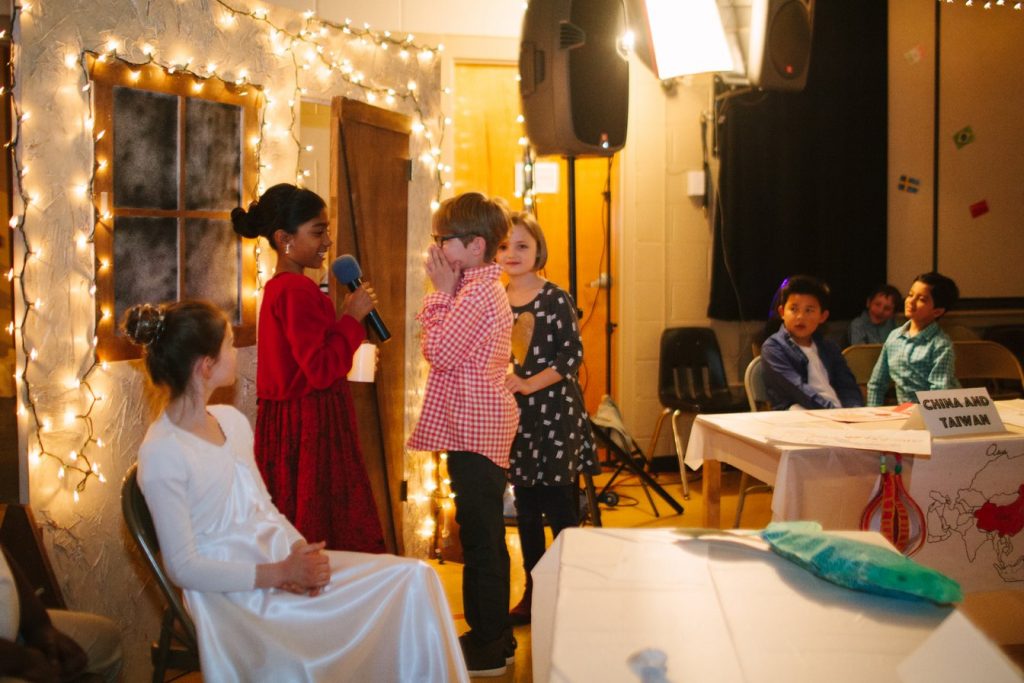
Students reenact the Candlemas tradition of going door to door singing for a candy treat.
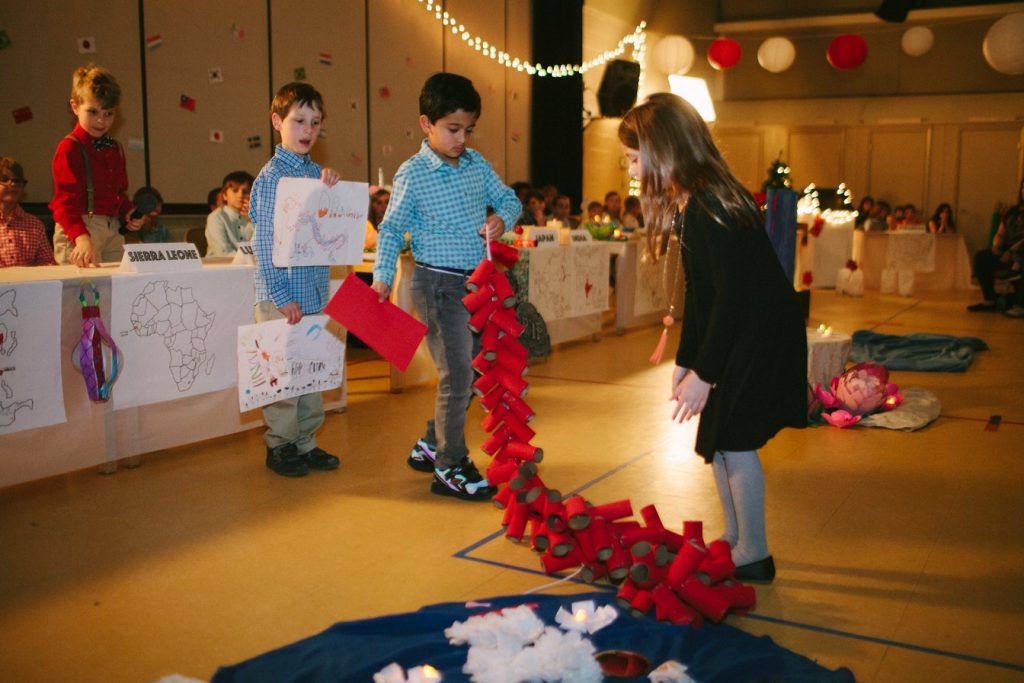
Students present the Chinese New Year, which is celebrated in China and Taiwan.
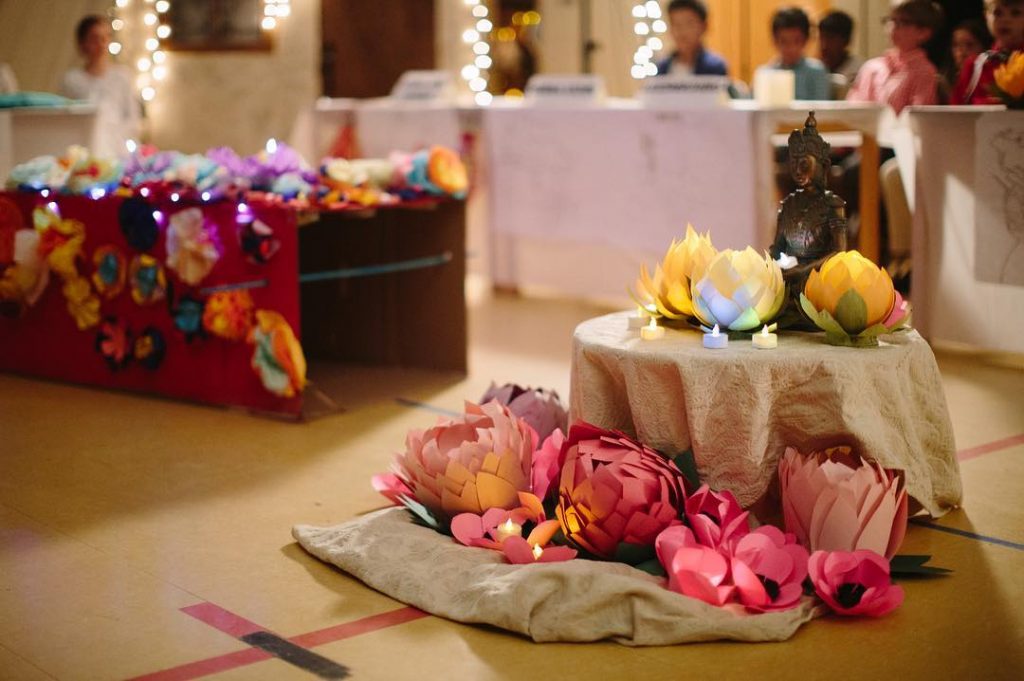
Pictured to the left is a student-made float for the Lantern Parade celebrating Eid al-Fitr in Sierra Leone. The celebration of Buddha's birthday in Korea is pictured to the right.
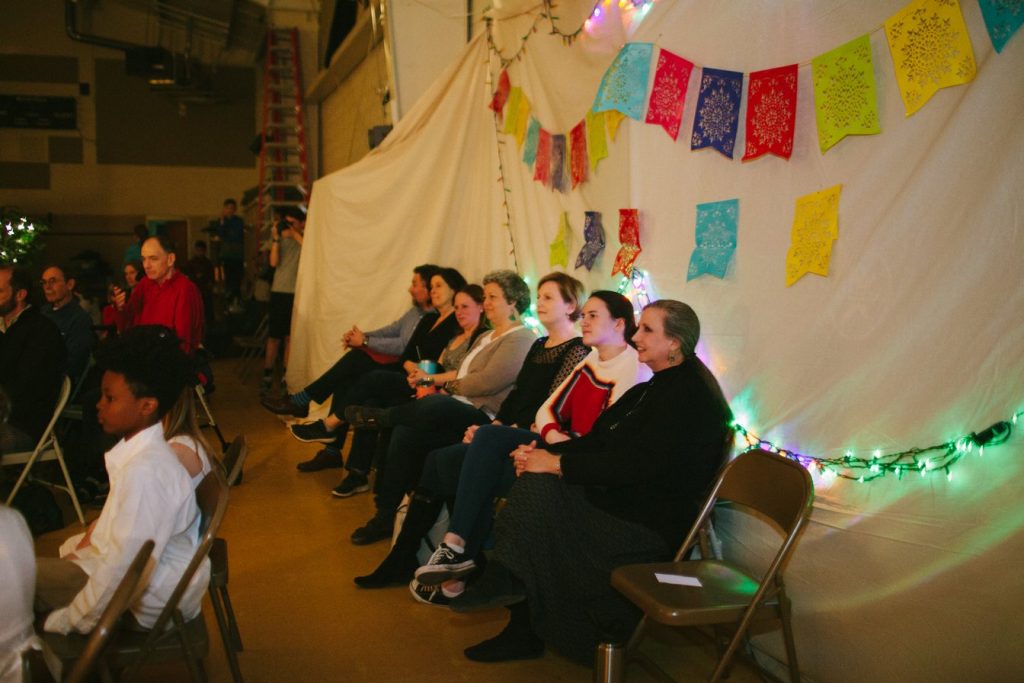
Here are the faculty, off to the side, letting the students take the lead in presenting their student research.

Students present the menorah and the lighting of the candles for Hanukkah in Israel.
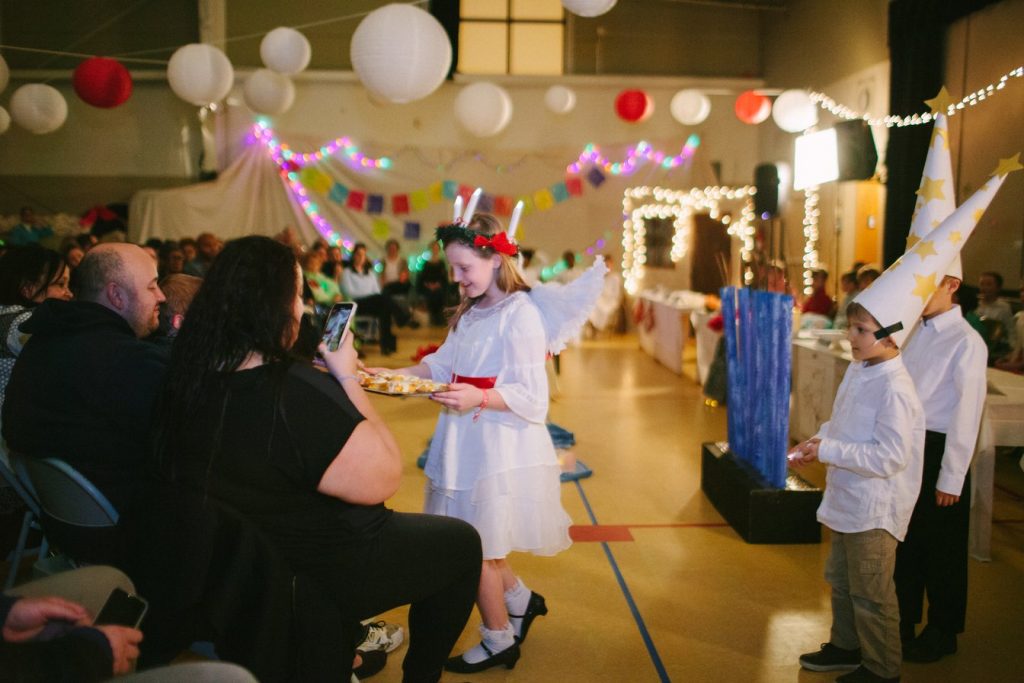
Luciadagen, or Lucia's Day, in Sweden, involves children dressing in all white and leading a procession while also handing out saffron buns.
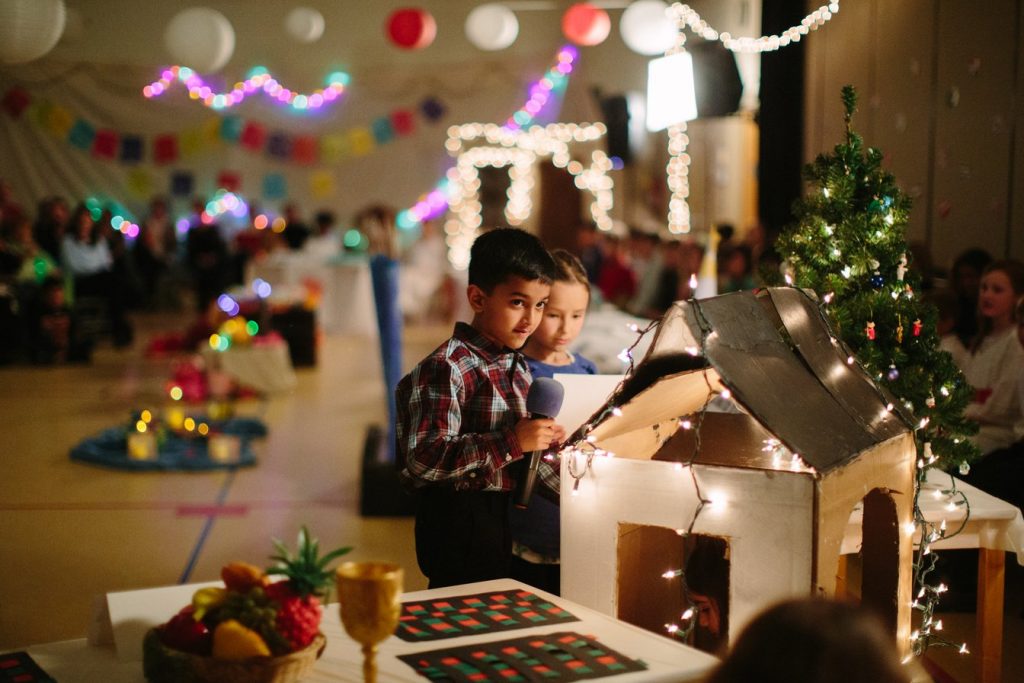
Las Posadas is a Christmas tradition from Mexico and is a reenactment of Mary and Joseph's search for the inn ("la posada") on Christmas Eve.

A third-grade student leads her peers in the final presentation of the night, a secular version of the song "This Little Light of Mine."
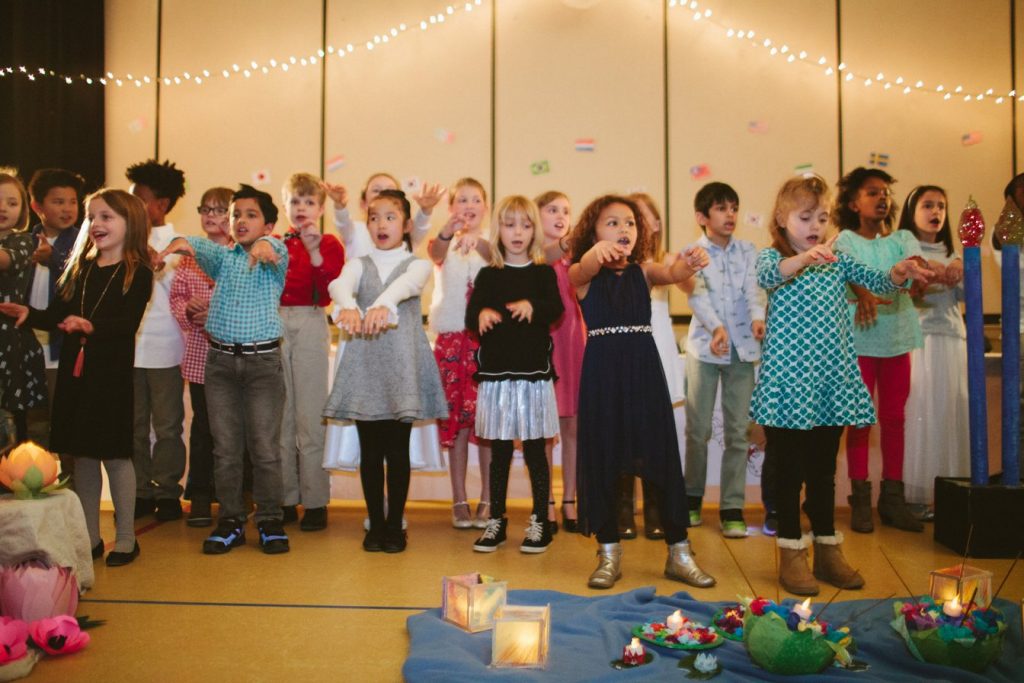
Students close their presentation by singing a secular version of "This Little Light of Mine."
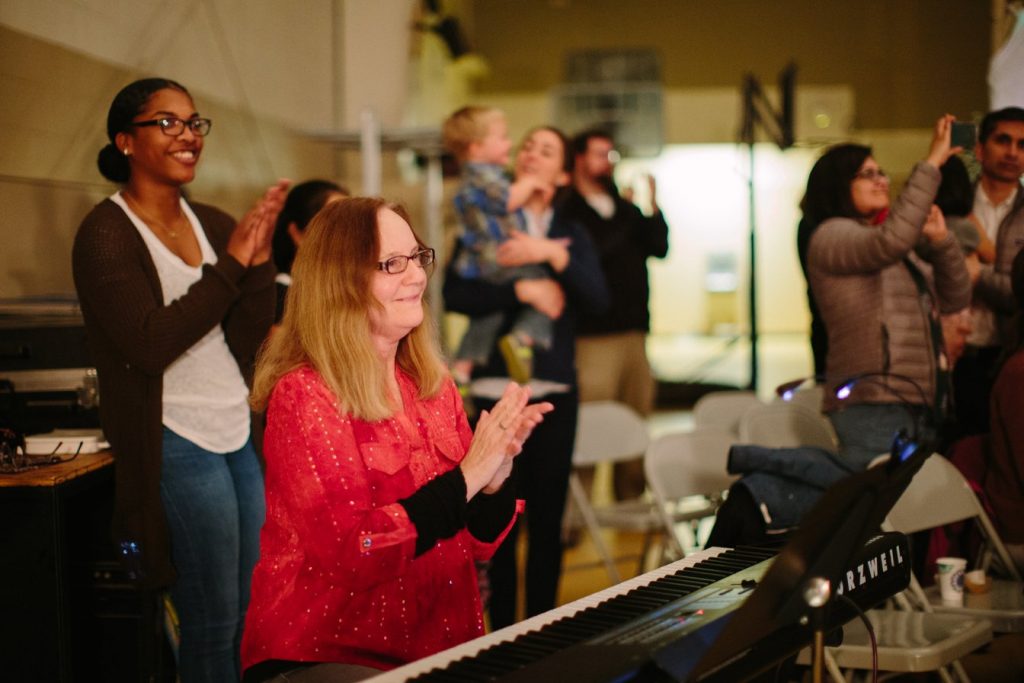
The Festival of Light comes to an end, and the students enjoy tremendous applause from the audience.
Greensboro Montessori School's Junior High faculty and students recently partnered with North Carolina A&T State University on a research project involving shiitake mushrooms. Shiitakes are edible mushrooms high in vitamins and chock-full of other health benefits. They're native to Eastern Asia and sold in farmers markets throughout the U.S. for upwards of $16 per pound. Recently, our Junior High students wanted to learn more about these delicious fungi.
On Fridays, our Junior High students participate in their careers program. Careers is one of Greensboro Montessori School's differentiating aspects of our adolescent curriculum. It equips students with real-world management skills by charging them with running a micro-economy. Students research and participate in various career teams such as finance, management, farming, culinary arts, research, design, production, and publishing. These career teams buy and sell from each other.
The farm team harvests produce from the School's permaculture gardens and sells it through their business, Maria's Market. Merging their science and careers curricula, the students decided that growing shiitake mushrooms to sell at Maria’s Market would be a worthwhile endeavor. They would be able to learn about the fungi kingdom, saprophytic organisms, mycelial networks, the medicinal value of mushrooms, and the details of producing and selling a high-value commodity item.
To help guide our students, Junior High science faculty, Tim Goetz, reached out to faculty at N.C. A&T. He asked if they would be willing to provide expert advice to our students, and they welcomed the opportunity to partner with us. This project-based science project began with a visit from Felicia Anike, a research specialist at N.C. A&T studying mushroom science and fungal biotechnology. She was joined by Melvin Mensah-Bonsu, a graduate research assistant, and Janelle Robinson, a graduate fellowship student. Felicia, Melvin, and Janelle gave a presentation to our Junior High students on the history, growing, and uses of shiitake mushrooms. They also demonstrated the proper drilling, inoculation, and waxing of the white oak logs on which these mushrooms grow.
The week following the presentation, all of our Junior High students cycled through the shiitake inoculation project. They drilled holes into freshly cut white oak logs sustainably harvested from Greensboro Montessori School's campus. Then, they plugged each hole with the spawn. Finally, they covered the holes with wax to keep the spawn safely in place and protected from other opportunistic fungi species.
The inoculated logs will sit for around six months as they become fully inhabited by the shiitake mycelial network. Students will then stack the logs and wait for fruiting to begin. It will take around eight to 12 months for the logs to begin producing shiitake mushrooms, but then, we can expect them to fruit for five to six years.
N.C. A&T gave us several different varieties of shiitake mushrooms, and students will be tracking how each performs, in what seasons they fruit, and other specific data points, which we will relay back to the team at N.C. A&T. Our students are excited to track the progress of the logs, and because the logs will fruit for so long, the logs will benefit future students as well. Mostly, we are excited to participate in project-based learning that has purpose and real-world benefits to the community. As our students research, manage, and harvest shiitake mushrooms from the logs, they will also provide a unique and healthy consumable product to the community.
Project-based learning ... this is how we teach science at Greensboro Montessori School!
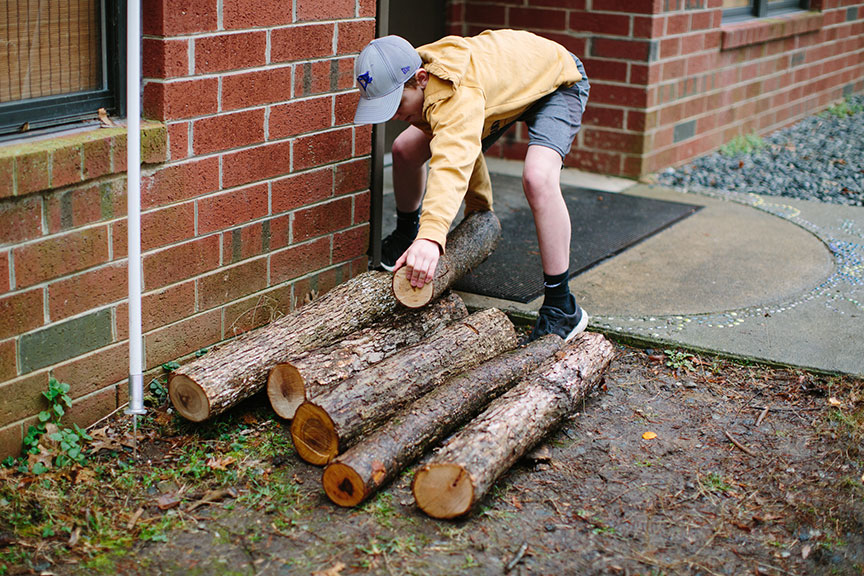
A Junior High student collects a sustainably harvested white oak log to be inoculated with shiitake mushroom spawn.
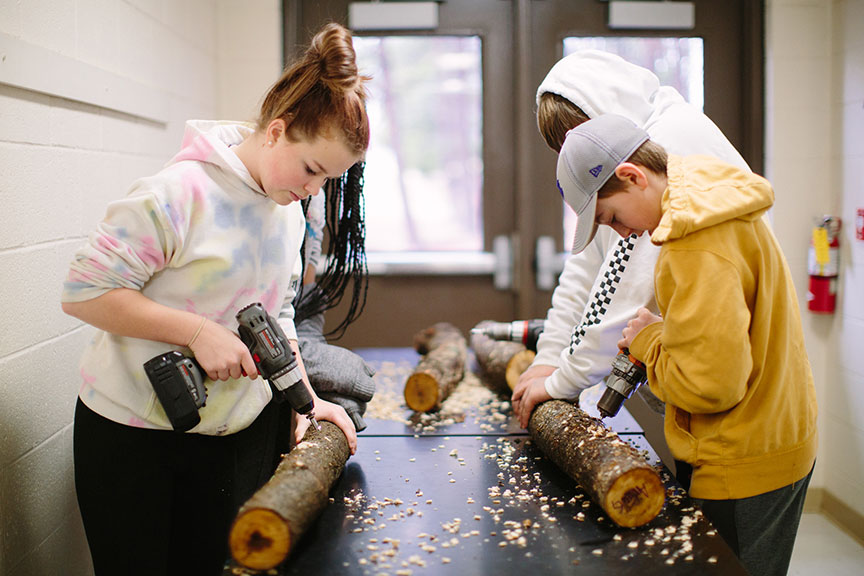
Using best practices they learned from researchers at N.C. A&T, students drill holes into the white oak logs.

Students inoculate logs by transferring shiitake mushroom spawn into the holes.
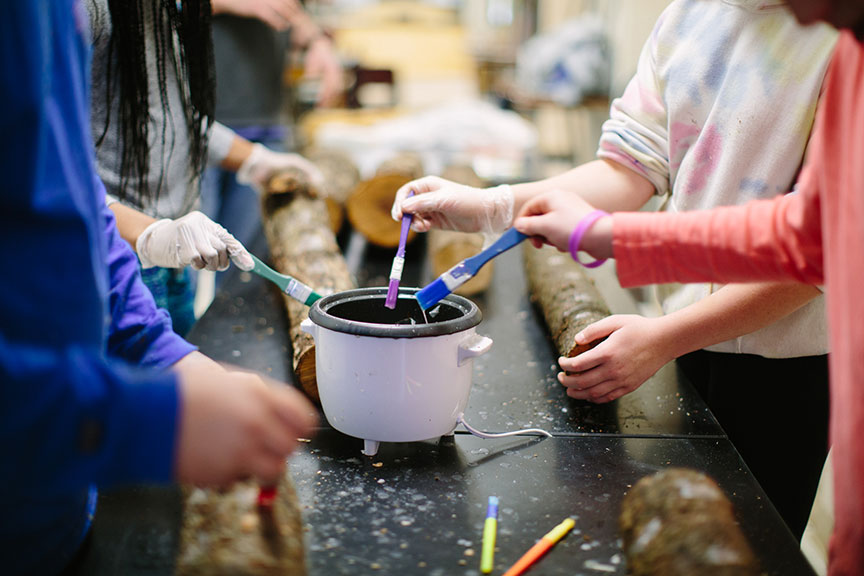
Students use wax to seal the holes, keeping the spawn firmly in place and protecting the spawn from other opportunistic fungi species.
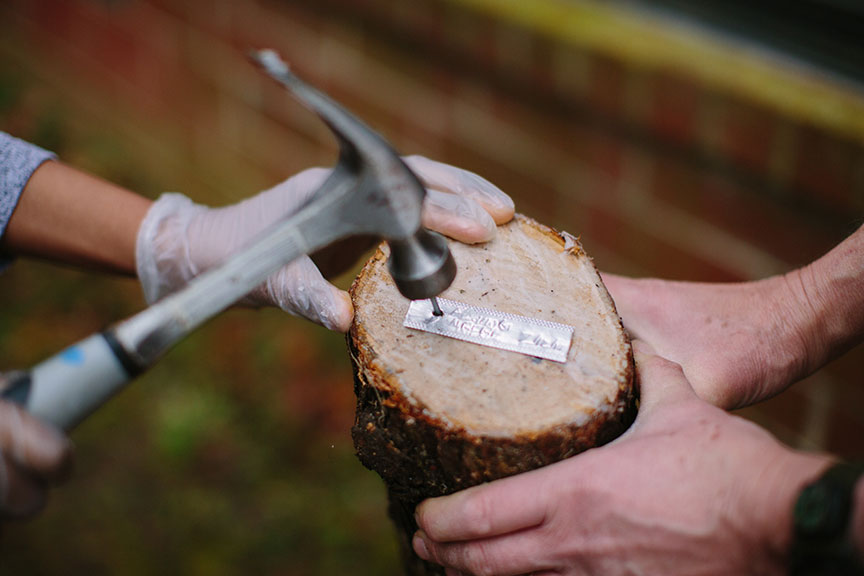
Students label each log, so they can report accurate data points about each mushroom varietal back to N.C. A&T.
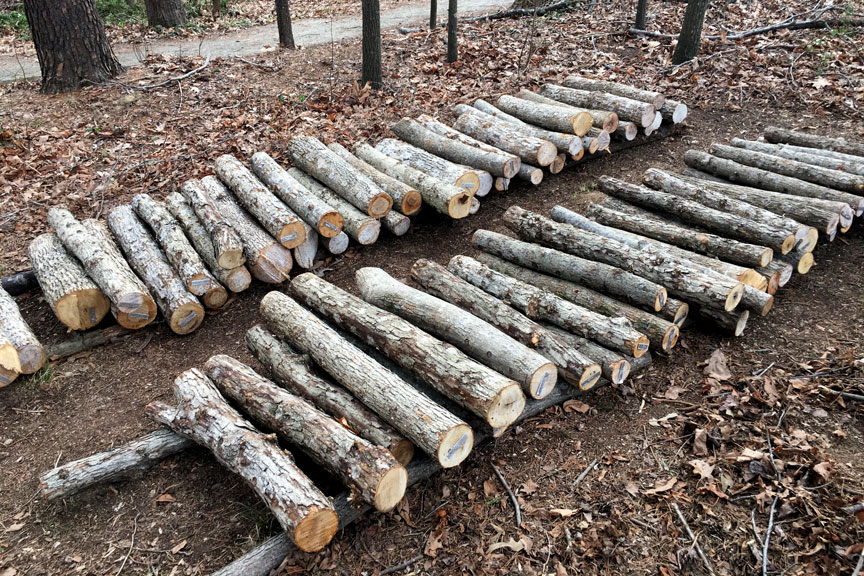
The inoculated logs will sit for around six months as they become fully inhabited by the shiitake mycelial network.
Dr. Omoanghe Samuel Isikhuemhen works in the department of Natural Resources and Environmental Design and is a professor of family and consumer sciences at N.C. A&T. Dr. Isikhuemhen's work centers around mushroom science and fungal biotechnology, and he leads research on mushroom science, production, and use in food and supplements for humans and farm animals. The members of his team have trained farmers to become mushroom growers, authored journal articles, and supervised student research in exotic mushrooms, truffles, and other related fungal biotechnologies. Greensboro Montessori School's Junior High students are the first group of adolescent-age students his team has trained in shiitake mushroom production.


